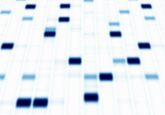New LC–MS system combines three mass analyzers for improved selectivity and sensitivity

The new Orbitrap Fusion TribridTM LC–MS system may achieve a higher level of structural information from metabolites, glycans, posttranslational modifications and sequence polymorphisms.
Thermo Fisher Scientific, Inc., have announced the release of their new Orbitrap Fusion TribridTM LC–MS system, which combines the company’s quadrupole, Orbitrap and linear ion trap in a novel ‘tribrid’ architecture that is capable of unparalleled depth of analysis of complex biological samples, according to Thermo Fisher.
The Orbitrap Fusion was initially presented by Thermo Fisher at the ASMS Conference on MS and allied topics, held from June 9–13 at the Minneapolis Convention Center (MN, USA).
Commenting on the new technology, Ian Jardine, chief technology officer at Thermo Fisher said, “In creating the Orbitrap Fusion, we have combined and improved our quadrupole, linear ion trap and Orbitrap technologies in an ultimately flexible research MS system – to arrive at an entirely new class of instrument that will transform our customers’ science.”
The triple-analyzer system encompasses a quadrupole for precursor selection at isolation widths down to 0.4 amu; an ultra-high-field Orbitrap capable of resolution in excess of 450,000 and scan rates up to 15 Hz; and an ion-routing multipole followed by dual-pressure linear ion trap providing MSn higher-energy C-trap dissociation, collision-induced disocciation and electron-transfer dissociation fragmentations and mass analysis with scan rates of up to 20 Hz. In order to address throughput challenges, the system uses tandem mass tags, which allow the MS to determine relative quantification of proteins in multiple samples simultaneously.
A press release from Thermo Fisher reports that the ‘tribrid’ configuration enables users to positively identify larger numbers of low-abundance proteins faster than previously possible with existing commercial instruments. The combination of the three analyzers is capable of simultaneous precursor isolation, fragmentation, and data acquisition in both the Orbitrap and linear ion trap mass analyzers.
The power to choose between fragmentation modes at any stage of MSn analysis with detection by the Orbitrap or linear ion trap analyzer broadens the range of possibilities in terms of metabolomics experiments, offering users the ability to transform many small molecule experiments by conclusively identifying unknowns as they are encountered.





